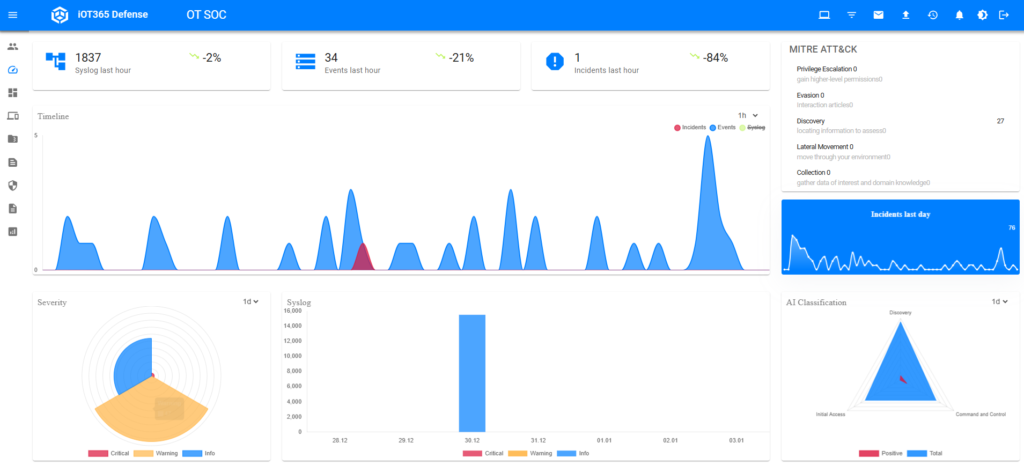
In recent years, the convergence of operational technology (OT) and information technology (IT) has transformed the landscape of cybersecurity. As industries increasingly rely on interconnected systems to manage critical processes and infrastructure, the need to protect these operational technologies from cyber threats has become paramount. In this blog post, we’ll explore the evolution of OT cybersecurity, the challenges it presents, and strategies for navigating this complex intersection of technology and security.
Understanding Operational Technology (OT)
Operational technology encompasses the hardware and software used to monitor and control physical processes, such as manufacturing, energy production, transportation, and utilities. Unlike information technology, which focuses on data processing and communication, OT is dedicated to managing the physical world.
OT systems include industrial control systems (ICS), supervisory control and data acquisition (SCADA) systems, programmable logic controllers (PLCs), and other devices that interact directly with machinery and equipment. These systems are crucial for maintaining the efficiency, reliability, and safety of industrial operations.
The Rise of OT Cybersecurity Threats
As OT systems have become increasingly interconnected and accessible via the internet, they have also become vulnerable to cyber threats. Historically, these systems were isolated from external networks, reducing the risk of remote attacks. However, with the adoption of IoT devices, cloud computing, and remote monitoring solutions, OT environments are now more exposed to cyber threats than ever before.
Cyberattacks targeting OT systems can have severe consequences, including production downtime, equipment damage, environmental damage, and even endangerment of human lives. Threat actors, including nation-states, cybercriminals, and hacktivists, are actively exploiting vulnerabilities in OT infrastructure for financial gain, espionage, sabotage, and disruption.
Challenges in OT Cybersecurity
Securing OT environments poses unique challenges compared to traditional IT security. These challenges include:
- Legacy Systems: Many OT systems were designed decades ago and lack built-in security features, making them susceptible to exploitation.
- Complexity: OT environments are highly complex, consisting of numerous interconnected components and legacy protocols that are challenging to secure.
- Safety Criticality: OT systems often control critical infrastructure and processes where any disruption can have catastrophic consequences.
- Limited Awareness: There’s a lack of awareness and understanding of cybersecurity risks among OT professionals, leading to inadequate protection measures.
- Convergence with IT: The integration of OT with IT networks blurs the boundaries between these traditionally separate domains, creating new attack vectors and security challenges.
Navigating the Intersection of OT and IT Security
Despite these challenges, organizations can enhance OT cybersecurity by implementing a proactive and holistic approach. Key strategies include:
- Risk Assessment: Conducting comprehensive risk assessments to identify vulnerabilities, threats, and potential impacts on OT systems.
- Segmentation: Implementing network segmentation to isolate OT environments from IT networks and limit the spread of cyber threats.
- Access Control: Enforcing strict access controls and authentication mechanisms to prevent unauthorized access to OT systems.
- Monitoring and Detection: Deploying intrusion detection systems (IDS), anomaly detection, and security monitoring tools to detect and respond to cyber threats in real-time.
- Patch Management: Regularly applying security patches and updates to OT systems to address known vulnerabilities and weaknesses.
- Training and Awareness: Providing cybersecurity training and awareness programs for OT personnel to educate them about potential risks and best practices for secure operations.
- Compliance and Standards: Adhering to industry-specific cybersecurity standards and regulations, such as NIST, ISA/IEC 62443, and NERC CIP, to ensure compliance and best practices.
Conclusion
As OT environments become increasingly interconnected and exposed to cyber threats, the need for robust cybersecurity measures has never been greater. By understanding the unique challenges of OT cybersecurity and implementing proactive strategies to mitigate risks, organizations can safeguard critical infrastructure, protect against cyber threats, and ensure the continued reliability and safety of industrial operations in an increasingly digital world.





